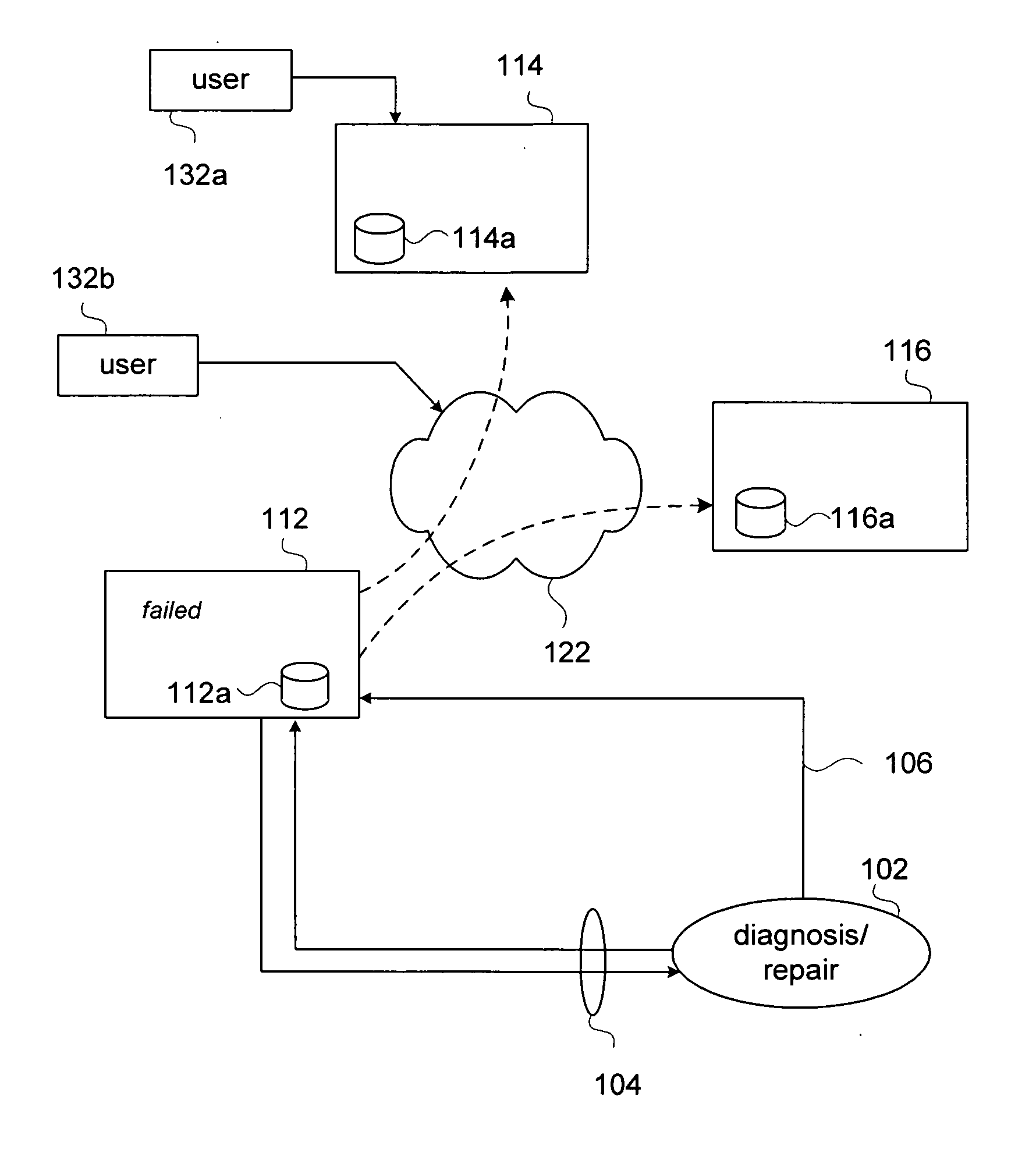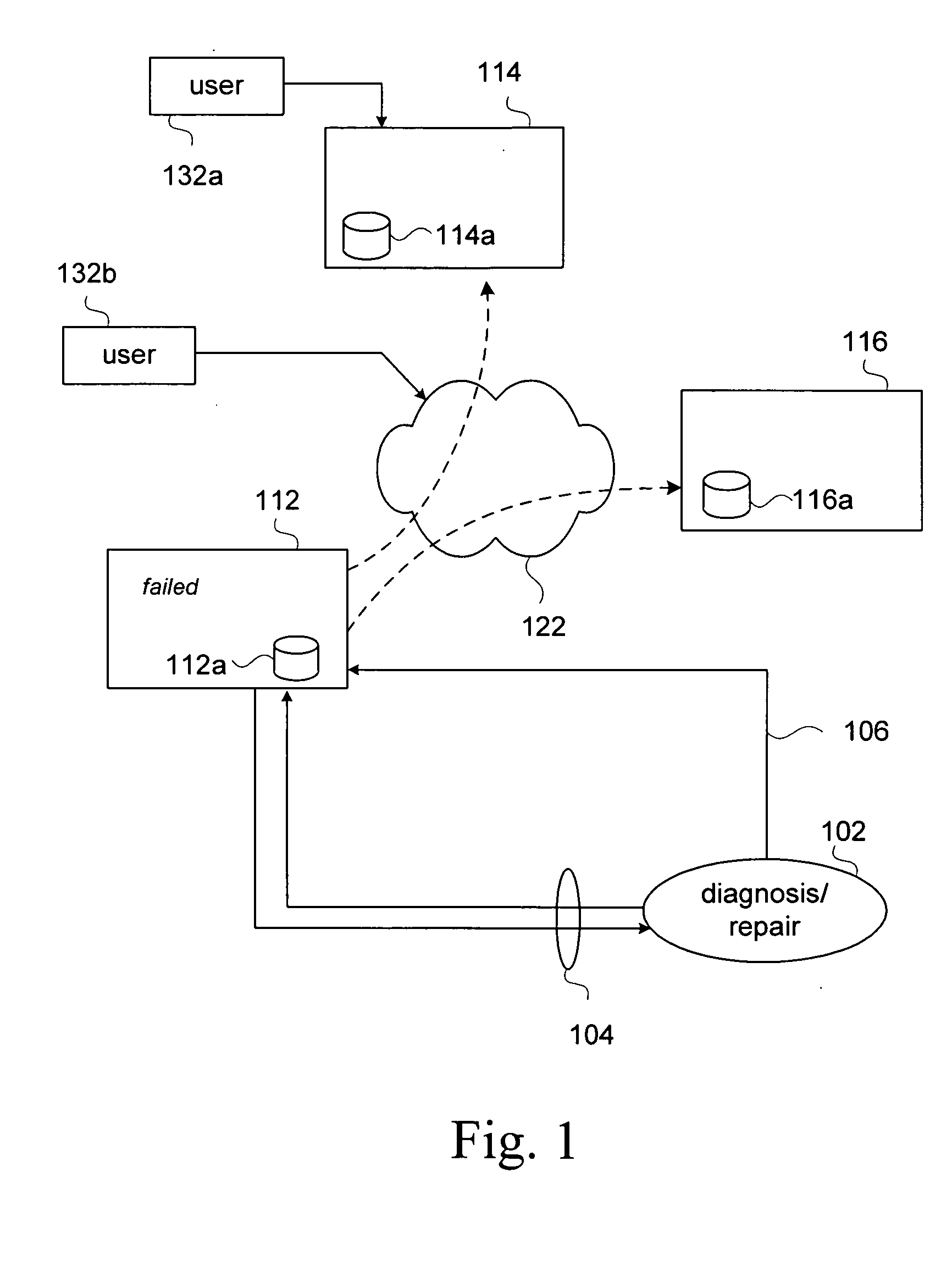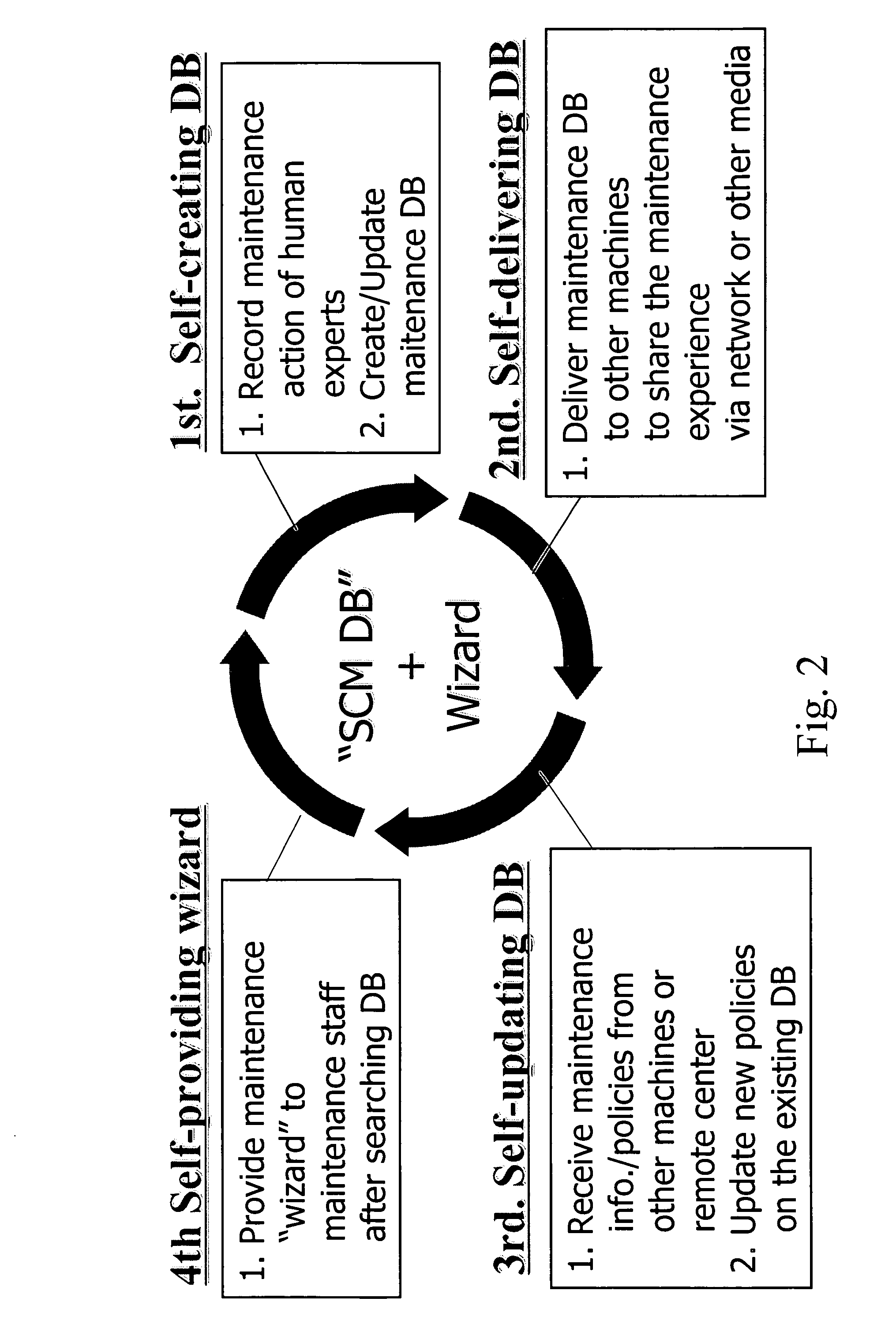Self-creating maintenance database
a database and self-creation technology, applied in the field of maintenance databases, can solve the problems of complex failures in such systems, failures in other components, and high cost, and achieve the effects of reducing the cost of maintenance, and improving the service li
- Summary
- Abstract
- Description
- Claims
- Application Information
AI Technical Summary
Benefits of technology
Problems solved by technology
Method used
Image
Examples
Embodiment Construction
[0017] Various aspects of the present invention are illustrated in the configuration shown in FIG. 1. A target computer system 112 is shown indicating that it is in a failed condition, where some number of its constituent components have failed. A diagnosis and repair entity 102 is shown interacting with the target computer system 112 to effect its repair. The repair entity 102 may be a single person attempting the repair, or a team of people coordinating their efforts to effect a repair.
[0018] The interaction between the repair entity 102 and the target computer system 10 is shown by reference numeral 104. The interaction includes information that may be provided by the target computer system 10 to the repair entity 102 such as indicators on a component, a video display with textual and / or graphical information, and so on. The interaction also includes physical activity performed on the target computer system 112 such as exchanging components, pressing buttons or levers or such to...
PUM
 Login to View More
Login to View More Abstract
Description
Claims
Application Information
 Login to View More
Login to View More - R&D
- Intellectual Property
- Life Sciences
- Materials
- Tech Scout
- Unparalleled Data Quality
- Higher Quality Content
- 60% Fewer Hallucinations
Browse by: Latest US Patents, China's latest patents, Technical Efficacy Thesaurus, Application Domain, Technology Topic, Popular Technical Reports.
© 2025 PatSnap. All rights reserved.Legal|Privacy policy|Modern Slavery Act Transparency Statement|Sitemap|About US| Contact US: help@patsnap.com



